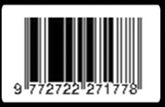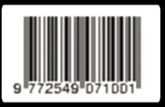OPTIMALISASI PROSES PEMBAHARUAN LOCATOR PADA KODE OTOMATIS SELENIUM DENGAN MENGGUNAKAN PAGE OBJECT MODEL
Abstract
Full Text:
PDFReferences
Garousi, V., et al. (2021). Model-based testing in practice: An experience report from web applications domain. Elsevier Science Direct The Journal of System and Software 180 (2021) 111032. doi: https://doi.org/10.1016/j.jss.2021.111032
Pombo N., and C. Martins. (2021). Test Driven Development in Action: Case Study of a Cross-Platform Web Application. IEEE EUROCON 2021 - 19th International Conference on Smart Technologies, Lviv, Ukraine, 2021, pp. 352-356.doi: 10.1109/EUROCON52738.2021.9535554.
Banjarnahor M.T., and L. S. Istiyowati. (2022). Smoke Automation and Regression Testing on a peer-to-peer lending Website with the Data-Driven Testing Method. Jurnal Rekayasa Sistem dan Teknologi Informasi. 6(4). 684-691. doi : https://doi.org/10.29207/resti.v6i4.4220.
Joe Lian Min, A. Istiqomah, dan A. Rahmani. (2020). Evaluasi Penggunaan Manual dan Automated Software Testing pada Pelaksanaan End-to-End Testing. Jurnal Teknologi Terapan. 6(1).
Riasat, H., Nazir, Z., and Zubair, S. (2021). Critical Analysis of software testing techniques and automation testing tools, International Journal Of Scientific & Engineering Research.12 (2). ISSN : 2229-5518.
Anand, R, and M. Arulprakash. (2018). Business Driven Automation Testing Framework. International Journal of Engineering and Technology. 7(2.8).
Malik, A., and A. Mehta. (2022). Automation Testing - A Review. International Research Journal of Modernization in Engineering Technology and Science. 4(6).
Ateşoğulları D., and A. Misra. (2020). Automation Testing Tools: A Comparative View. International Journal of Computer Science and Information Technologies. 4(12).
Ramler, R., and C. Klammer. (2019). Enhancing Acceptance Test-Driver Development with Model-Based Test Generation. IEEE 19th International Conference on Software Quality, Realibility and Security Companion.
Ouriques R., Krzysztof W., and Tony G. (2023). The Role of Knowledge-based resources in Agile Software Development Context. The Journal of Systems & Software. doi:https://doi.org/10.1016/j.jss.2022.111572.
Imtiaz J., Zohaib I., and Uzair K. (2020). An Automated Model-based Approach to Repair Test Suite of Evolving Web Applications. The Journal of System and Software.doi:https://doi.org/10.1016/j.jss.2020.110841.
Fischbach J., Andreas V., Dominik S., and Andreas W. (2020). SPECMATE: Automated Creation of Test Cases from Acceptance Criteria. IEEE 13th International Conference on Software Testing, Validation and verification (ICST).doi: 10.1109/ICST46399.2020.00040.
Biagiola, M., et al. (2019). Web test dependency detection. in Proceedings of the 2019 27th ACM Joint Meeting on European Software Engineering Conference and Symposium on the Foundation of Software Engineering. doi:https://doi.org/10.1145/3338906.3338948.
Presler-Marshall, K., E. Horton, S. Heckman, and K.T. Stolee. (2019). Wait Wait No Tell Me Analyzing Selenium Configuration Effects on Test Flakiness. 2019 IEE/ACM 14th International Workshop on Automation of Software Test (AST). doi: 10.1109/AST.2019.000-1.
Biagiola, M., et al. (2019). Diversity-Based Web Test Generation. Proceeding of 27th ACM Joint European Software Engineering Conference and Symposium on the Foundations of Software Engineering (ESEC/FSE'19). doi: 10.1145/3338906.3338970
Rosa, A. S. dan M Shalahuddin. (2013). Rekayasa Perangkat Lunak Terstruktur dan Berorientasi Objek. Bandung: Informatika.dan Berorientasi Objek. Bandung: Informatika.
Roger S. Pressman. (2010). Software Engineering : A Practitioner's Approach (7th ed). New York: McGraw-Hill.
J. Sutherland. (2014). SCRUM: The Art of Doing Twice the Work in Half the Time. New York: Crown Business.
Cara Kerja, Pengertian, Konsep selenium webdriver. Retrieved September 19, 2023, from browserstack website: https://www.browserstack.com/guide/selenium-framework.
DOI: http://dx.doi.org/10.31000/jika.v8i1.9710
Article Metrics
Abstract - 884 PDF - 592Refbacks
- There are currently no refbacks.

This work is licensed under a Creative Commons Attribution-ShareAlike 4.0 International License.
INDEX BY :
 |
 |
 |
 |
 |
 |
 |










 Jurnal Of Informatics (JIKA)
Jurnal Of Informatics (JIKA) 